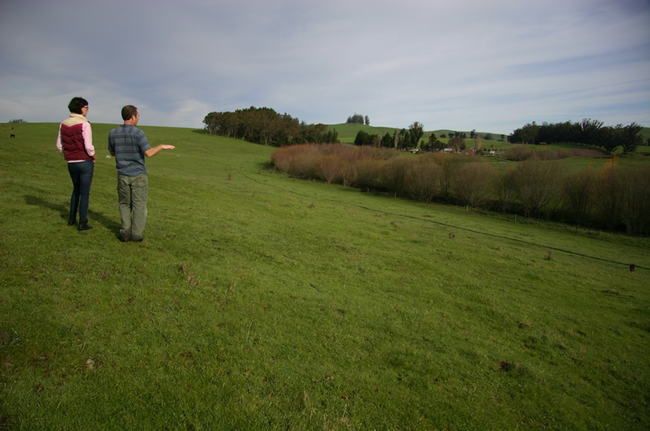Counties can offset greenhouse gas emissions with stream restoration
“We have long known that stream revegetation improves wildlife habitat and enhances water quality, but that fact that the vegetation and trapped sediment capture carbon underscores the importance of this conservation practice,” said David Lewis, a UC Agriculture and Natural Resources (UC ANR) watershed management advisor for Marin, Sonoma and Napa counties.
Going back to the time when Gen. Mariano Guadalupe Vallejo was running long-horn cattle on a vast tract of land in Alta California, ranchers didn't always understand the value of the trees, shrubs and grasses that grew around rangeland waterways.
Vallejo removed vegetation because it provided a hideout for grizzly bears that attacked his cattle and pilfered hides being tanned. In later years, authorities coached landowners to alter streams and remove plants to increase stream flow and improve flood control.
Beginning in the 1960s, the environmental impacts of removing trees and plants became apparent and public funds were made available to share in the cost of restoring streamside vegetation on private land, said Lewis, who is also director of UC ANR Cooperative Extension in Marin and Napa counties. Over a period of three years, he and a team of UC and local scientists studied the stream revegetation projects that took place from about 1970 to just recently. They documented the carbon sequestration benefits of stream revegetation and calculated the value based on the current market for carbon credits. The results were shared in a report released this month, Mitigating Greenhouse Gas Emissions through Riparian Revegetation.
“In Marin County, for example, the cost per metric ton for carbon dioxide equivalence sequestered with revegetation was $19.75. The carbon market is currently paying about $12.50,” Lewis said. “There is about $7 that we haven't made up. But when you think about the other benefits of riparian restoration – reduced sediment, restored habitat for migratory songbirds and other wildlife – I would bet that value to be much greater than $7.”
Lewis' research will be of interest to county governments as they strive to reduce total greenhouse gas emissions to comply with the requirements of the 2006 California Global Warming Solutions Act (AB 32). The legislation requires California to reduce its greenhouse emissions to 1990 levels by 2020. As part of the law, local governments must write a “Climate Action Plan” to report how they will monitor and track progress in reducing and offsetting greenhouse gas emissions.
“It may make sense for governments and project proponents to invest in creek restoration and other farm conservation practices to reach and surpass their carbon emission reduction goals,” Lewis said.
Through 1990, Marin ranchers restored more than 25 miles of stream with willows, oaks and other trees and shrubs. Those plants trapped sediment contain an estimated 80,265 metric tons of sequestered carbon – an amount equal to emissions from 61,959 passenger cars in one year.
Lewis estimates there are several hundred miles of unrestored streams in Northern California coastal counties. And the implications of this study have application for rangeland streams throughout California.
“This represents tremendous potential for carbon sequestration,” Lewis said. “And rancher interest in stream restoration has never been higher. Working with the ranchers to plant trees and shrubs along our waterways presents a significant opportunity to offset carbon emissions.”
An initiative to maintain and enhance sustainable natural ecosystems is part of UC Agriculture and Natural Resources Strategic Vision 2025.


Posted by Fred Sommers on November 19, 2015 at 6:59 AM